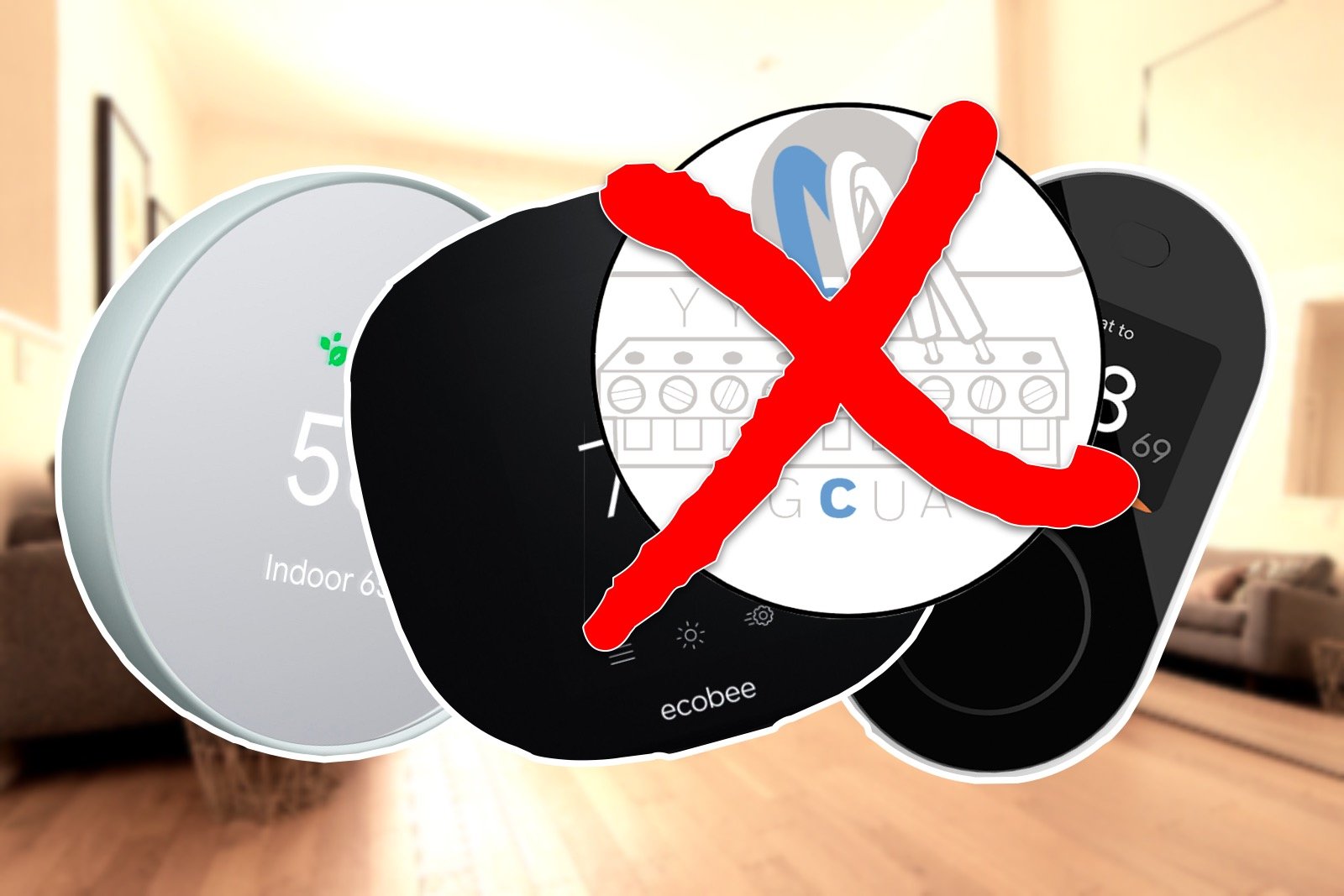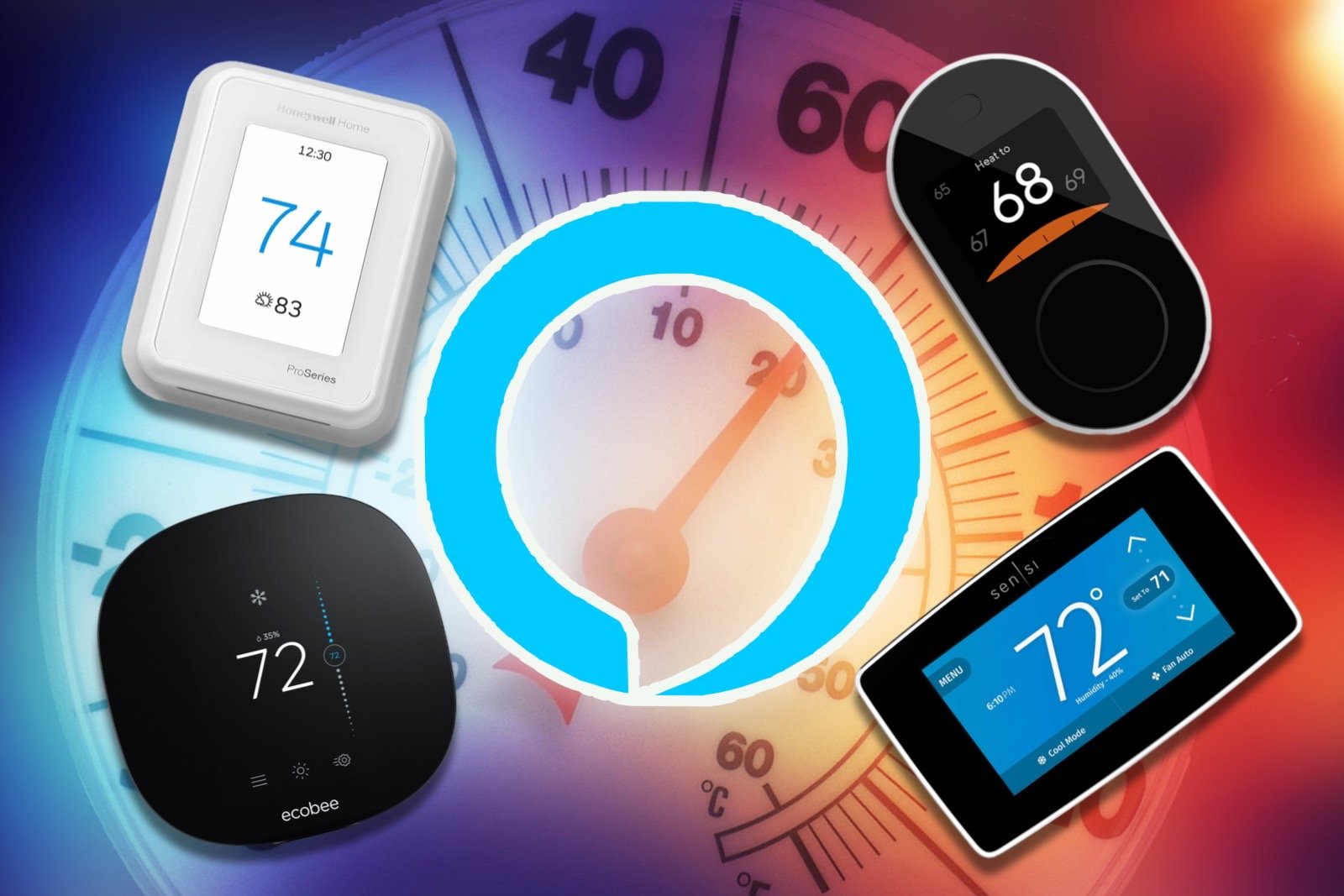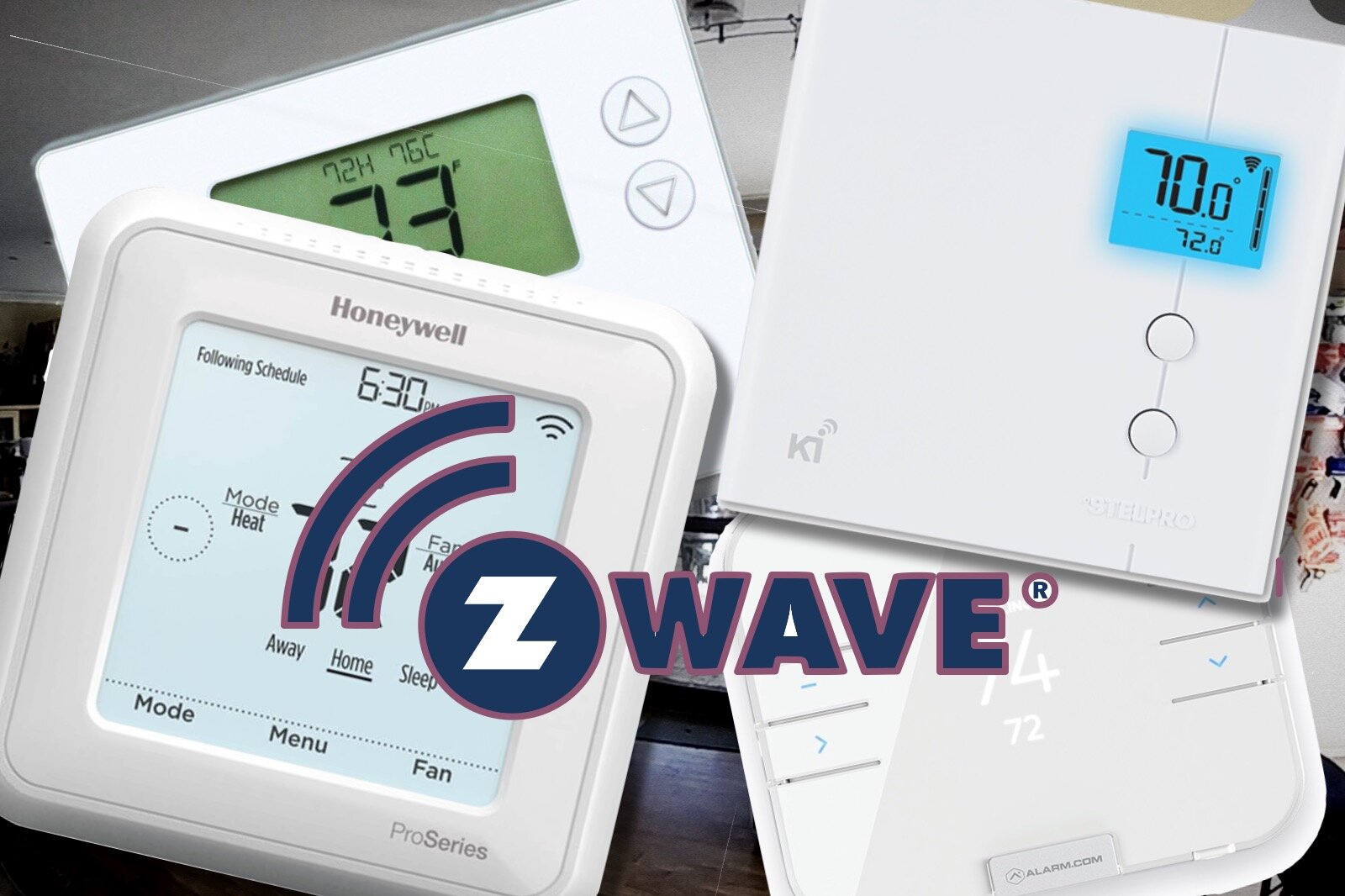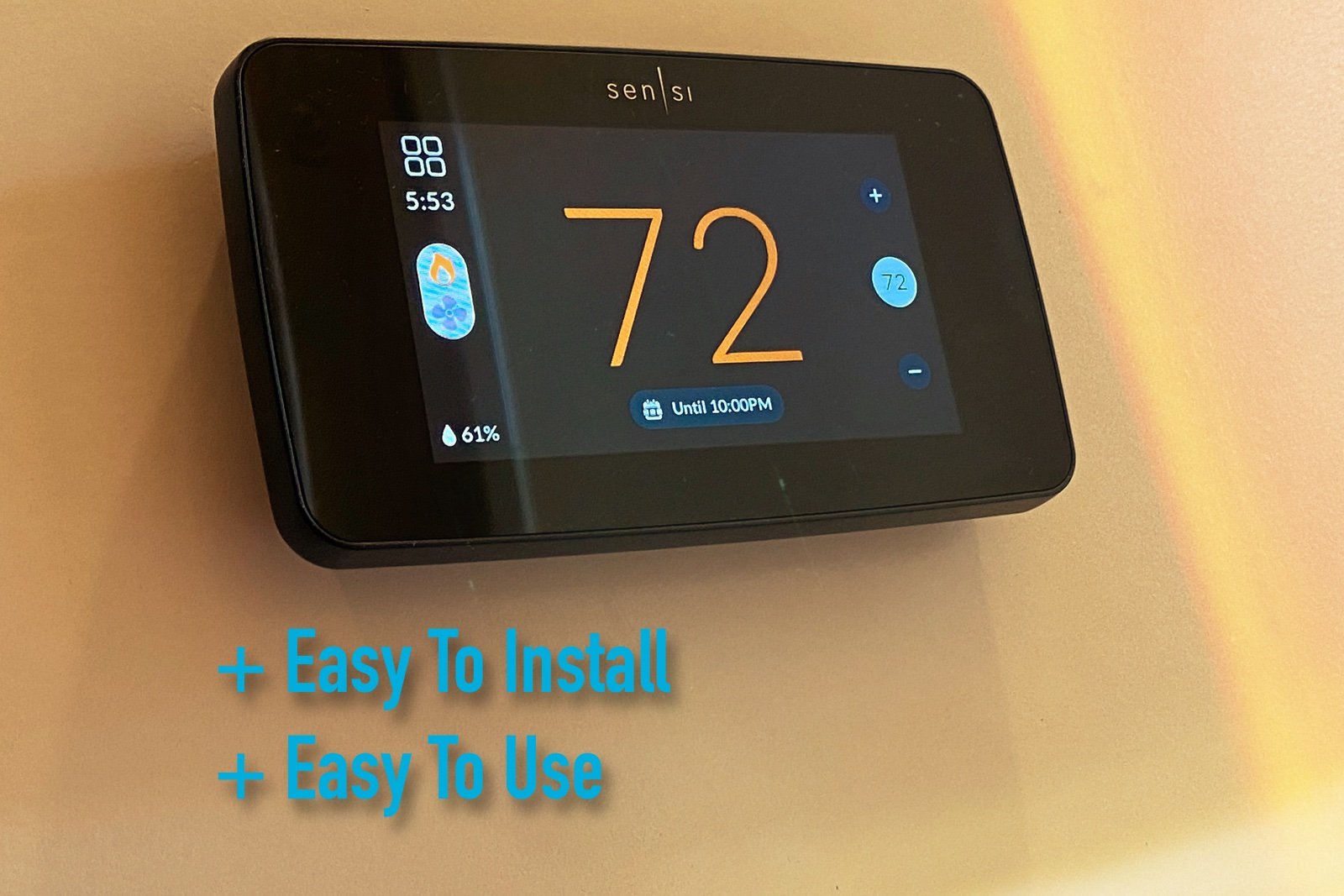What Is The C-Wire On A Thermostat?
When you buy through links in this article, I may earn an affiliate commission. Learn More.
If you’re asking this question, chances are you’re looking at getting a new smart thermostat. While some thermostats, particularly older models, don’t require a c-wire, it’s more often the case that any modern thermostat will need one, and you’ll find most smart thermostats will note this as a requirement.
Most wall mounted thermostats, smart or otherwise, are known as ‘low voltage’, and the c-wire discussion only applies to these types of heating and cooling systems. Low voltage refers to the fact that the HVAC control system uses a 24V power supply in contrast to a line voltage system which runs the full 120V right to the thermostat.
What is a C-wire?
A c-wire, or common wire, acts in the same way as the neutral wire in high voltage electrical systems. C-wires provide a dedicated return path for the electrical load needed by the thermostat to provide constant power to run its own features. All newer low voltage thermostats require a continuous source of 24V power in order to do their thing unless they are old, purely manual switch models.
In the case of smart thermostats this is particularly necessary because of the presence of communication radios (WiFi, Z-Wave, or some other protocol), touch screens and possibly additional sensors.
Simpler types can get enough power from the wiring the controls the heating and cooling functions, but anything with more internal electronics will need a dedicated power supply so as not to interfere with the switching functions of HVAC systems by drawing too much voltage through the control wires.
The difference between 4 wire and 5 wire thermostats
Thermostats can have various wire terminals to support different HVAC features, such as two stage heating, heat pumps, auxiliary fans and so forth. Ignoring these other wires and extra features, basic thermostat functions need four wires, with a c-wire making up a five-wire system.
It’s important to note that, although wire colors are often the same for different functions, the colors of the wires are NOT standard and can vary between manufacturers and installers. Use the labels on the terminals to identify the correct wires in your system.
A 4-wire system will have:
G - Fan control
R - 24 VAC input
Y - Compressor (cooling) control
W - Heat control
A 5-wire system will include an addition wire, the C-wire, or Common wire:
G - Fan control
R - 24 VAC input
Y - Compressor (cooling) control
W - Heat control
C - Common 24 VAC
How To Find Your C-wire?
The easiest way to determine if you have a c-wire is to check the wires connected to your existing thermostat installation. It’s a good idea to turn off the breaker to your HVAC first to avoid damaging your equipment if wires get inadvertently pulled. Once done, you should be able to pop the cover off your thermostat and see the wiring terminals.
Most thermostats are designed to make this fairly accessible by having them run through the mounting plate and under an access panel on the front, but some may be on the back. In that case you’ll need to pop the thermostat itself off the wall plate and gently pull the wires out of the wall a little so you can see the terminals on the rear.
Check if you have a low voltage thermostat
First, we need to ensure you have a low voltage system. This will be obvious if there are four or more multi-colored wires that are thinner than typical electrical wiring. If there is only a black and red wire (or two) joined with wire nuts, then you have a line voltage system.
Your only option with a line voltage system is to get a line voltage smart thermostat. The options in this space are a lot more limited, but there are a few products that may suit with some possible limitations on supported features. See our list of buyer’s guides further down for some options.
Look for the C-wire in the existing wires
Assuming we have a low voltage thermostat we can proceed to check for the c-wire itself. If you have a c-wire attached, it should be connected to the C terminal (naturally) on the thermostat. This is most often a blue wire, but as there is no actual standard to guarantee that is the case checking the terminal label itself is best.
If there is no wire connected to the C terminal, you may still have one. Thermostat wiring is generally supplied in a bundle of multiple wires, and the c-wire may be simply tucked into the wall. You can pull a little more out through the wall plate and see if it’s there or not. You could also do this at the other end to see if there is an unused c-wire or even one connected to the control board of your HVAC that’s not being used.
Remember, because the wire color doesn’t actually matter, if there is any unused wire in your wall that goes back to the HVAC system then you can use that by connecting the other end to the C terminal on the control board. You only need that one wire to solve this issue.
Thermostat wiring with a c-wire
What If I Don’t Have a C-wire?
If you find that you don’t have a c-wire (and you do have a low voltage thermostat setup), there are some options available to resolve the situation.
Get a smart thermostat that doesn’t need a c-wire
On the face of it, this is the easiest option, but it may not be the best. There are certainly smart thermostat models that don’t need a c-wire, although most of these still have the option to use one. Usually the c-wire requirement is avoided by using batteries to power the thermostat instead. Seems perfectly fine, right? In my experience, you’ll likely find it’s a bit of a hassle.
Not only will you have to deal with replacing batteries every few months (or even weeks) depending on various factors like usage, placement, model, and signal strength, you’ll likely find that the performance of the device is not as good without a constant power source. I find it’s a common complaint with battery-powered smart thermostat models that they are less reliable in terms of Wi-Fi connection, as well as climate control performance. Of course, you’ll also run the risk of the battery dying while you’re away and the thermostat not working at all.
A slightly different approach is that taken by the Google Nest Thermostat which uses parasitic energy harvesting. This works by taking a little bit of the power flowing through the control wires when the HVAC system is running to top up an internal rechargeable battery. There are a few Nest Thermostat models that offer this approach, and newer ones also have a pair of standard AA batteries as backup, which has proven necessary in cases where the system may not be run often enough to keep the battery charged.
Even if you opt for a Nest Thermostat you might find that certain functions are disabled when running without a c-wire anyway. As I noted above, some smart functions simply drain battery-based models too fast, so they will rarely be as good as a model with constant power.
Use a c-wire adapter (many come with one)
In some cases, you will be able to use a c-wire adapter. These are small devices that can take the inputs from the HVAC control panel and give you the required outputs as well as a c-wire. This works by re-purposing an existing wire between your thermostat and HVAC system as the c-wire and then using some electronics to replace the functions of two of the other in-use terminals, usually the G and Y wire. Remember to check for an unused wire of any color that you can use instead before going with this option.
There are a few models of smart thermostat that come with such an adapter in the box, such as smart thermostats from ecobee and Wyze. Other brands can use an add-on wire connection unit like the Emerson Common Wire Kit or Venstar Add-a-wire accessory.
Use a 24VAC transformer and plug it in
Another alternative to the c-wire adapter could be a 24VAC power brick. This would need to be plugged into a conventional wall outlet near your thermostat, so it’s the least desirable option because you’ll have the power cable hanging out there for all to see, depending on your thermostat location. If you’re really in a pinch, though, this may be a viable option.
These transformers are actually the same power supplies that wired doorbells use, so they’re fairly easy to get hold of, and have plenty of wire length to reach a power outlet. One example is this highly rated model from Hotop which comes with a good length cable and a whole bunch of cable clips to secure it to the wall.
Below is an example of how a similar transformer would be wired to each corresponding terminal to provide continuous power to the Nest Thermostat. The AC shown is a simplistic representation, but you can see how simple the connections can be for the power.
Thermostat c-wire 24VAC transformer diagram
Install a new wire bundle to get a c-wire
Ultimately the best solution is to just install a new wire and be done with it. This involves pulling out your existing thermostat cable and replacing it with a 5-wire bundle.
You can pick up rolls of 18-gauge thermostat wire cable from Amazon in various lengths relatively cheaply, and if you go for an 8-wire cable like the one pictured you’ll have some future proofing as well.
You’ll need to be careful to photograph and label all your existing wires at both the thermostat wall plate end, and the furnace or HVAC control board, and be sure to do any wiring changes with the power off to prevent damage to your expensive equipment.
As with anything regarding your thermostat, if you’re not comfortable pulling cable through your walls it’s best to get a professional to do it properly.
18/8 thermostat cable
Smart Thermostat Buying Options
So now we know more about what the c-wire is for, how to find it, and what to do if it’s not there, we can look to smart thermostat models that we can use in each situation. We have a few buyer’s guides for different smart thermostat needs, many of which don’t require a c-wire.
No C-Wire Thermostats
Our picks for the best smart thermostat options that are specifically designed to work without a c-wire at all.
Thermostats for Alexa
See the best Alexa compatible smart thermostat models that work with or without a c-wire. We also include some good budget options.
Z-Wave Thermostats
See the best Z-Wave compatible models that work with a c-wire, run on batteries, or run line voltage systems, also with budget alternatives.
Thermostats for HomeKit
The best HomeKit smart thermostats mostly have power adapter options if you don’t have a c-wire.
Summary
Assuming you don’t have a line voltage heating system, a common wire (aka c-wire) is the best way to provide power to your smart thermostat, especially in the case of higher end models where you have greater power requirements for fancy touch screens and smart learning features. Some smart thermostats can use battery power, but it’s a hassle and you’re better off getting a c-wire in there somehow.
There are a few ways to do this depending on your situation, budget, and the effort you’re prepared to spend. Be it using a cheap c-wire adapter, plugging in a 24VAC transformers, or just getting a proper c-wire installed, this is most often a solvable problem.













